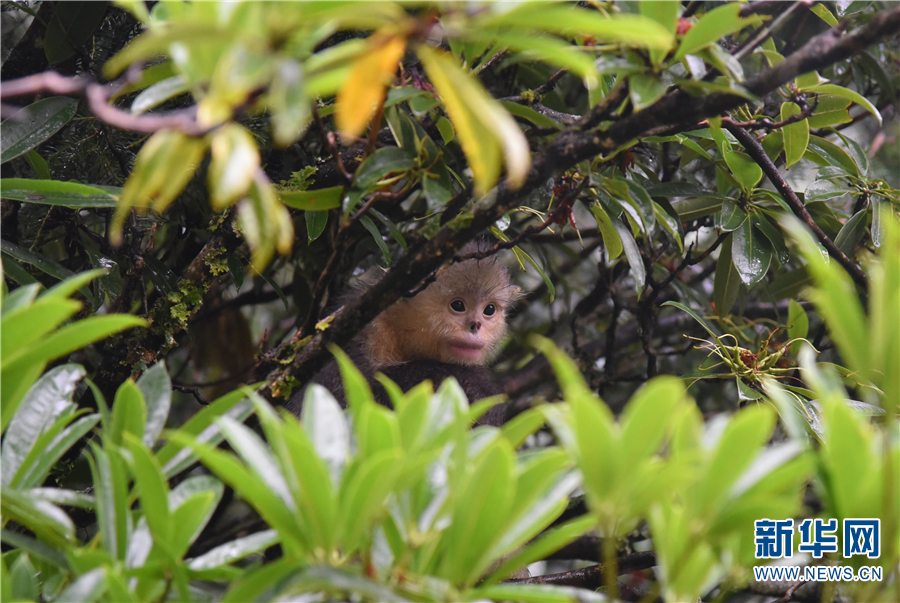The Yunnan snub-nosed monkey numbers continuing to increase
Yu Jianhua gets up at 5:30 every morning to eat breakfast and prepare food for Yunnan snub-nosed monkeys. He has been following this daily schedule for 22 years, come rain or shine.
65-year-old Yu Jianhua is one of the monkey protectors at the Yunnan Snub-nosed Monkey National Park in Shangri-La, southwest China's Yunnan Province. He lives in the park, which is one of the most active places for Yunnan snub-nosed monkeys. Who would've thought that Yu Jianhua used to be the best hunter in the village.
"In order to make a living when I was younger I used to go hunting wild boar, bison and bears in the mountains," Yu Jianhua recalls. In the 90s he put down his shotgun and started protecting Yunnan snub-nosed monkeys.
In 2009 the Yunnan Snub-nosed Monkey National Park in Shangri-La officially opened to the public. Yu Jianhua was employed as a monkey protector in the park and received 1500 yuan (232 US dollars) per month as the salary. There are a total of 24 monkey protectors like Yu Jianhua, all coming from the three villages inside the national park.
Yu Zhonghua, Yu Jianhua's 30-year-old son, has had a different experience to his father. He was educated up to middle school but since childhood spent his time working in the mountains with his father. His interest was in collecting plant specimens and then buying books and going online to do comparisons.
Due to his abundant plant knowledge, in 2003 Yu Zhonghua was employed by National Nature Reserve of Baima Snow Mountain, the largest reserve of the Yunnan snub-nosed monkey in China..
Yu Zhonghua remembers that the nearby mountains were bare when he was a child, but now are like a jungle and people can't even go in. With a healthy ecological environment the Yunnan snub-nosed monkey numbers are continuing to increase.
According to statistics, there are currently more than 60 Yunnan snub-nosed monkeys and eleven families that can be observed in the national park. 2017 has seen an increase of nine monkeys, which has attracted many tourists to the park.
Your Comment
Name E-mailRelated News
-
;
-
-

-
Snub-Nosed Monkeys in Shangri-La
The Shangri-La National Park of Snub-Nosed Monkey in Yunnan province covers an area of 334 sq km, which is located in Tacheng Township, Deqin Tibetan Autonomous Prefecture.
-
-
-

-
Inheritor of traditional Tibetan wooden products in SW China's Yun
Yeshe says that Tibetans show special preference for traditional Tibetan wooden bowls, because they are both an article of daily use and works of art.
-
-
-

-
National park in Yunnan has nine new snub-nosed monkeys
A national park in southwest China's Yunnan province is home to more than 60 Yunnan snub-nosed monkeys, an endangered species, with nine newly born in this year.
-
Based in Lhasa, Tibet Vista is a Tibet travel agency that specialized in Tibet permit, and Tibet tours for both private and group travelers at a local price!
•4 Days Lhasa City Group Tour from USD 460 •8 Days Everest Base Camp Group Tour from USD 850 •15 Days Mt.Kailash Group Tour from USD 1780 •2016 Tibet Train Tours from Beijing, Shanghai, Chengdu, Xining,etc










